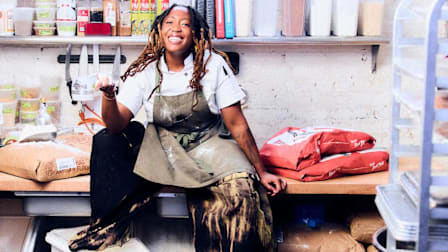Everything You Need for a Real Italian-American Feast of the Seven Fishes
Younger generations are discovering a culinary tradition rich with history. Here’s how they’re making the Seven Fishes their own (and how you can do the same).
When you shop through retailer links on our site, we may earn affiliate commissions. 100% of the fees we collect are used to support our nonprofit mission. Learn more.
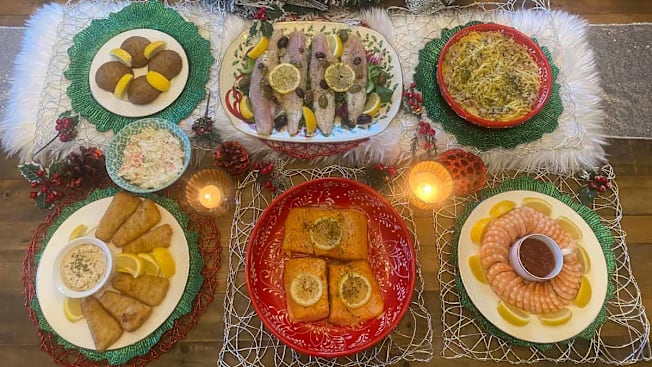
When Rosemary Quast (née Antonelle) got married and moved to Maryland in 2006, she brought a slice of Italian-American New York with her: the Christmas Eve tradition of the Feast of the Seven Fishes. Quast, whose ancestors are from Naples and Bari, grew up abstaining from eating meat on Christmas Eve (a rule rooted in Roman Catholicism) and instead embraced delicacies found under the sea: crab, oysters, salmon, shrimp, calamari, scallops. “My Nanny and my aunt on my mom’s side always made scungilli but I have not ventured there,” Quast says of the sea snail that can be one of the more intimidating fish to tackle.
Quast, who is in her forties, is welcoming this age-old tradition into her home, and now her three young children even help her prepare the fish courses after Christmas Eve mass. “I felt compelled to institute things that were part of my life growing up to continue to help me feel grounded in my New York Italian culture,” Quast says. “I hope they love it enough to keep the tradition going as they grow up with their own families.”
Why Do Italian Americans Celebrate the Feast of the Seven Fishes?
Quast’s experience moving south and taking her traditional Christmas Eve with her is a modern-day reflection of what the Seven Fishes is at its core: a tradition that grew in the U.S. after (mostly) Southern Italians migrated here in the late 1800s and 1900s and felt homesick for old-world holiday celebrations. A longing to connect with Italy and its foods, coupled with rules about meat that hark back to medieval-era Catholicism and the immigrants’ newfound abbondanza, or abundance they acquired from their new lives in the States, made the Seven Fishes feast flourish, particularly in “seafaring” areas like New York, New Jersey, and Connecticut, Ian MacAllen, author of Red Sauce: How Italian Food Became American, tells CR.
“During the diaspora, you come to the United States and there’s a lot more bounty—the abbondanza as they call it—the idea of this bounty of food and wealth and availability,” MacAllen says. “You’re constantly celebrating life and reunification of your family.” The Southern Italy that immigrants left behind but never forgot was marked by poverty, famine, and disease, so having the opportunity to celebrate Christmas Eve surrounded by family and a fish feast was a source of pride. “In Italy, people were literally starving,” MacAllen says. “No matter how bad you were in America, at least you were eating every day.”
The types of fish that were and are served differ depending on the fish readily available in specific regions in Italy and a family’s own preferences. In mountainous areas of Italy further inland, you couldn’t have fresh fish regularly until refrigeration came along, MacAllen says. Popular fish in these areas were those that could be salted and preserved, like cod (called baccalá) or eel, which could survive in murky water in a barrel or even in a bathtub. Some families continue to enjoy these preserved fish and serve them alongside more modern options, like shrimp cocktail (which was not a dish you found in Italy).
Why Seven Fishes?
The number seven is significant in the Catholic Bible—for example, there were seven days of creation, seven pairs of clean animals on Noah’s Ark, and there are seven sacraments—which could explain why the feast is associated with seven fish. But seven fish was never a hard-and-fast rule among all families, MacAllen says, and plenty of modern families bend the rules or have their own sacred number of fish to prepare in mind.
“There are dishes that we always make and others that we experiment with from year to year,” says Kristin Pansini, 36, a mom of two from New Jersey who took over Christmas Eve cooking duties with her husband in 2019. They both have ancestors from Calabria, Sicily, and Naples. “We usually have more than seven dishes, too, since some fish are repeated (think baked clams as well as vongole—smaller clams that are often prepared with pasta), or shrimp cocktail in addition to shrimp in the fish salad.”
How Younger Generations Are Making the Seven Fishes Their Own
On her cooking TikTok channel, Tammy Kotsev, whose ancestors are from Abruzzo, shares her secret to cooking Zuppa di Pesce, a fish soup often served as one of the Seven Fishes courses:
@basicbitchcooking Zuppa di Pesce #seafoodrecipe #familyrecipe #dinnerparty #shellfish #onepotmeals #italiancooking #italianamerican
♬ Drowsy - OHNO
“My grandma would serve fish on Christmas Eve, whether it was stuffed calamari or cabbage with anchovies or baccalá,” Kotsev says. “I have a seafood allergy, so while I don’t get to enjoy the Seven Fishes Feast, it’s important to me that I keep up the tradition with my family.”
Kotsev took over Christmas Eve cooking 10 years ago, when she was 36, and the New Jersey attorney says she has seized the opportunity to infuse her family’s holidays with new items. “I make a zuppa di pesce, which is a tomato-based seafood soup with lobster, shrimp, mussels, clams, scallops, and cod,” Kotsev says. “The secret is lots of white wine. I also make a seafood salad of shrimp, calamari, and crab meat with a lemon-Dijon and caper vinaigrette. My cousin makes the fried flounder.”
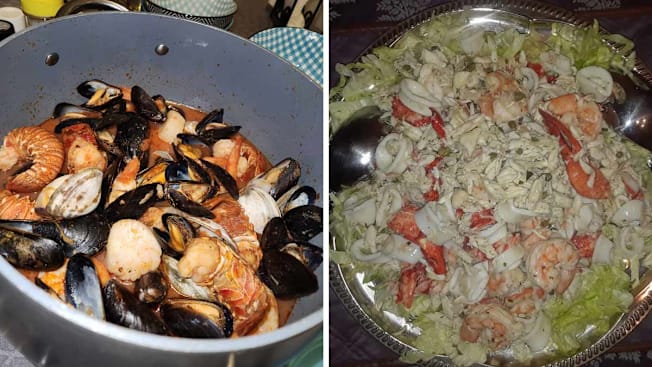
Photos: Tammy Kotsev Photos: Tammy Kotsev
This Christmas Eve will mark Elizabeth Clifford’s first time cooking the Seven Fishes with her husband. The mom of three from Staten Island, who is 40 and whose ancestors hail from Calabria, Naples, and Sicily, says she is inspired by her maternal grandfather, who loved cooking fish (and who considered it a “sin” to eat meat on Christmas Eve). When it’s her time to roll up her sleeves and carry on the tradition, Clifford plans on combining old techniques and tools with modern ones.
“I will be attempting to make a redfish sauce with clams and mussels over linguine in my grandmother’s big sauce pot on my stove,” Clifford says. “For lobster tails, I’ll use kitchen shears to cut through the top of the shell from the top down to the tail. My husband will make a seafood salad that will have scallops, calamari, lobster, shrimp, baccalá, and scungilli. We will have breaded shrimp and scallops fried in an electric frying pan. My husband just purchased a warming tray from Costco that I’m excited to try to keep my dishes warm.”
In younger Italian-American households, some Seven fish dishes will continue, others will be replaced by flashier fish, and the use of time-saving gadgets will mean fewer hours spent in the kitchen and more time spent together. But the tradition is living on in younger people’s hearts, families, and kitchens.
What You Need to Cook a Seven Fishes Feast
Whether you want to try cooking the Seven Fishes on Christmas Eve or any other night, you’ll need a few kitchen staples (and time-saving tools and accessories won’t hurt). To start, we recommend a quality chef’s knife, nonstick frying pan, and sheet pan for baking. Here are additional kitchen products and tools that can help.
Kitchen Shears
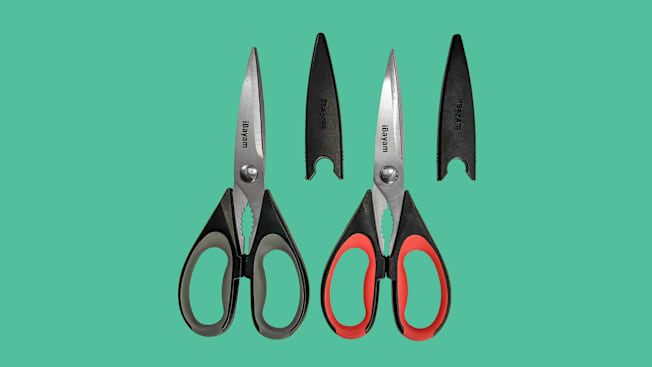
Photo: Consumer Reports Photo: Consumer Reports
Kitchen shears can be used to cut fish with more precision and help scale them. We evaluated several brands, and iBayam was among the top performers. Shop for them at Amazon.
Cutting Boards

Photo: Consumer Reports Photo: Consumer Reports
A durable kitchen cutting board is a necessity for prep tasks and the Gorilla Grip model stays put on your counter, according to our cutting board evaluation by our CR’s classically trained chef and editor, Paul Hope. Shop for it at Amazon.
A Garlic Press

Photo: KitchenAid Photo: KitchenAid
Garlic presses can be kitchen workhorses year-round, but they can go into overdrive during the Feast of the Seven Fishes and other holidays. We loved the classic KitchenAid model when we evaluated garlic presses and rockers at home. Shop for it at Amazon.
Citrus Squeezers

Photo: Chef'n Photo: Chef'n
Lemon complements a variety of fish dishes, so keep a citrus squeezer on hand to press fresh juice without seeds. The Chef’n model below was among our favorites because of its comfortable grip. Buy it at Amazon.
A Food Steamer
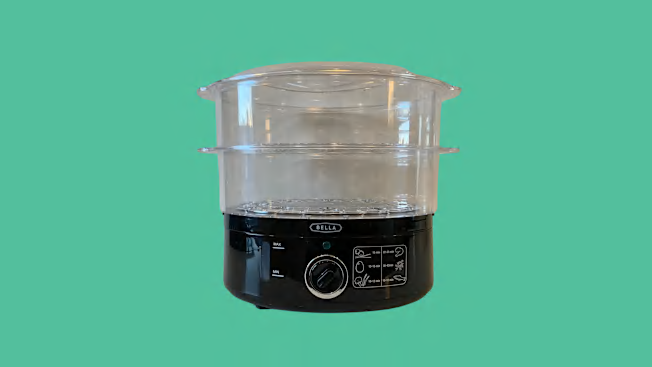
Photo: Consumer Reports Photo: Consumer Reports
An electric food steamer provides a fast way to cook white fish and salmon so that you can free up your oven space. We liked this two-tiered Bella model, which is available at Amazon.
Oven Mitts
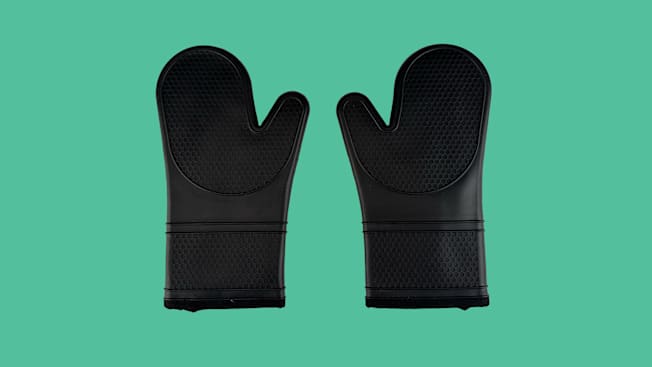
Photo: Consumer Reports Photo: Consumer Reports
A quality pair of oven mitts that protects your hands and arms is a must when cooking so many fish at one time. We evaluated several brands, and Gorilla Grip—available at Amazon—was among our favorites.
Turner Spatulas
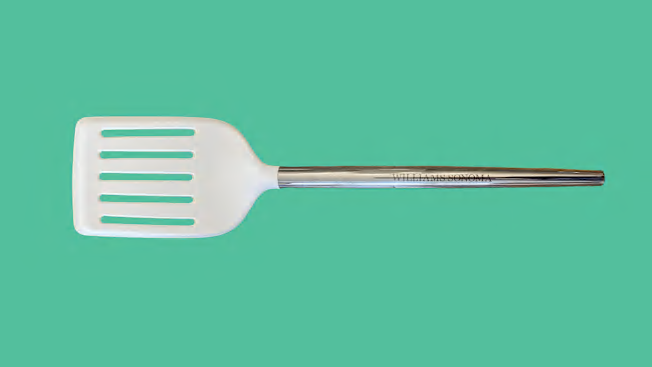
Photo: Consumer Reports Photo: Consumer Reports
Spatulas are kitchen workhorses—good for everything from flipping delicate filets of fish to omelets. This multitasking slotted spatula from Williams Sonoma is thin enough to do both and was among our top spatulas.
Melamine Dinnerware

Photo: Food52 Photo: Food52
Melamine is virtually indestructible, so there’s no need to worry about broken dishes. This set, which we loved in our dinnerware evaluation, is elegant—classic white offsets any fish dish you serve. It’s available at Food52.
A Powder Cleanser

Photo: Consumer Reports Photo: Consumer Reports
The one downside to cooking fish is that the odor can linger. A powder cleanser like Bon Ami cleans splatters, spills, and kitchen surfaces. We liked it in our evaluation because it included safer ingredients and didn’t leave a residue. Find it at Walmart.


















